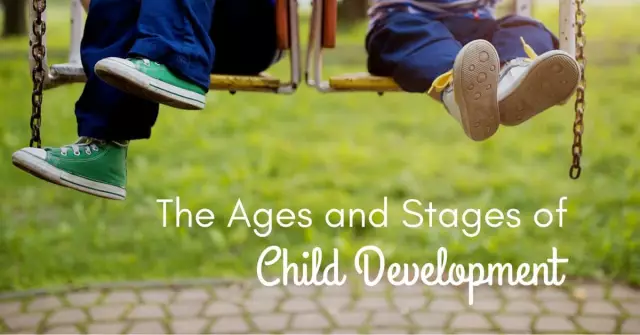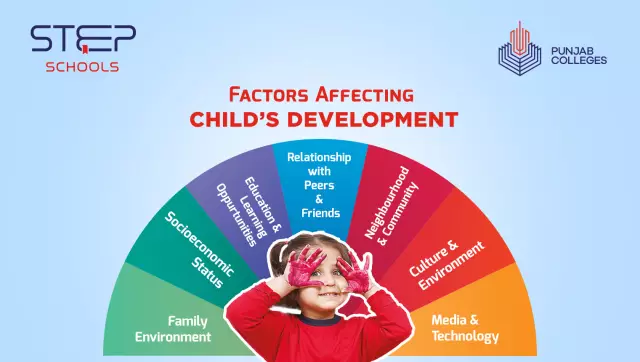- Author Rachel Wainwright [email protected].
- Public 2023-12-15 07:39.
- Last modified 2025-11-02 20:14.
Child development stages

During growth, the human body undergoes many changes, at certain periods - crisis. The meaning of the word "crisis" from a medical point of view differs from that generally accepted in society. This is an extremely unfavorable time for the economy, after which it is difficult to expect immediate positive shifts. In medicine, the original meaning of the Greek word "krinein" - "share" is used. That is, a crisis is a sharp transition from one state to another, qualitatively changed. In pediatrics, the stages of child development are separated by critical periods. This is the most vulnerable time for the body, but after the crisis, the body acquires new qualities, goes to a completely different level of existence. Anatomical and physiological parameters change, the child grows and approaches the adult standard of living.
There are various classifications that try to reflect the stages of a child's development in relation to their industry:
- Pedagogical;
- Legal;
- Psychological;
- Medical.
Teachers determine the age-related opportunities for teaching children, the degree of their intellectual development. The stages of development of the child's speech as the second signaling system of higher nervous activity are of great importance.
Legal classification determines the degree of responsibility before the law and ensures property and other rights of minors.
Psychology considers the stages of a child's development in terms of personality formation, taking into account hereditary and acquired communication skills in society.
Medical classification considers the period of childhood as the initial segment of life, in which children of certain age groups have their own anatomical and physiological characteristics. From the point of view of genetics, the stages of a child's development include the very initial period of existence, from the moment the zygote is formed. This is the first crisis in a person's life. The end of childhood from the point of view of medicine ends with puberty.
Age stages of child development
According to the age of a person, the childhood years of life are divided into certain periods of time. Medical classification takes into account the anatomical and physiological characteristics of the body, in relation to medical methods of diagnosis and treatment. Many sections seem unacceptable for society, pedagogy, jurisdiction, but the age stages of a child's development, one way or another, begin from the first minute after conception and are subdivided into the following periods:
- Embryonic;
- Perinatal;
- Chest;
- Preschool;
- Preschool;
- School: junior and senior (pubertal).
The intrauterine stage of a child's development lasts 280 days, which is 10 lunar months. During this period of life, three crisis points of fetal development are determined:
- Zygote formation;
- Placenta formation;
- Childbirth.
At each segment of a person's intrauterine life, the processes of laying and forming internal organs take place. This is of great importance for the prevention of congenital diseases. Harmful factors are excluded, necessary and safe medicines for the expectant mother are selected.
The neonatal stage of a child's development covers the first four weeks of a person's life. This is the neonatal period, which is characterized by adaptation to life after intrauterine stay. At this time, the child's body is in a continuous struggle with aggressive environmental factors.
Further adaptation takes place in infancy. Breastfed babies are more resistant to infections because they are protected by the mother's immunity. Nevertheless, many processes in the baby's body at this time are prone to generalization. So, a febrile reaction in almost all children is accompanied by a convulsive syndrome. By one year of life, the thoracic stage of the child's development ends. The child fully adapts to the environment.
The preschool period of development lasts from one to three years. Children are susceptible to age-related infections due to increased contact with peers. In such a short period of time, all stages of the development of a child's speech go through, therefore, children are subject to mandatory examination by a speech therapist. This is the time of childhood infections: chickenpox, measles, scarlet fever, mumps, etc.
The preschool stage of a child's development lasts from three to seven years. There is a noticeable decrease in body weight growth, but limb growth continues. At the age of six, the replacement of milk teeth with permanent ones begins. Pathological processes lose their systemic character, and diseases are limited to the defeat of individual organs.
In the primary school period of childhood, the skeletal system is subjected to the greatest stress, prevention of curvature of the spine is carried out. A change in nutrition at this stage of the child's development provokes the development of the pathology of the gastrointestinal tract. Children suffer from non-observance of hygiene rules, which is manifested by diseases of "dirty hands": intestinal infections, helminthiasis, acute hepatitis.
The puberty period, that is, the final stage of the child's development, is characterized by the development of the secondary genital organs, starting at the age of 12. By the age of 16, the clinical manifestations of all diseases in adolescents are the same as in adults.
The main stages of child development

Critical periods determine the transitions from one state of the child's body to another. Therefore, the main stages of child development are separated by the following crises:
- Newborns;
- First year of life;
- Three years of age;
- Seven years of age;
- Seventeen years old.
In some countries, the age of majority is legally determined at 21 years, based on the level of development of higher nervous activity. From the point of view of physiology, the final formation of the personality is completed by the age of 25.
Found a mistake in the text? Select it and press Ctrl + Enter.






